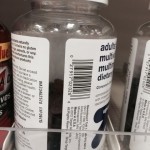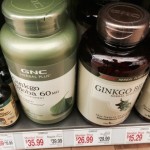Slack Fill – Filling Up Space in Packaging – Is Deceptive and Illegal
Companies looking to sell their goods for higher prices and greater profit margins have been preying on consumers’ inability to determine the better bargain by misleading customers by including wasted space in their packaging and filling it with air rather than the purchased goods. Consumer reports has been pointing this out for the last several years as can be seen here.
This empty space is referred to as slack-fill. The federal regulations define slack-fill as:
Slack-fill is the difference between the actual capacity of a container and the volume of product contained therein.
Furthermore, according to Title 21 of the Food and Drug Laws (21 C.F.R. 100.100) if a consumer cannot determine the amount of air filling up space in the container, then according to the relevant federal laws the product is deemed misbranded and sold illegally. The law provides for limited exceptions:
Nonfunctional slack-fill is the empty space in a package that is filled to less than its capacity for reasons other than:
(1) Protection of the contents of the package;
(2) The requirements of the machines used for enclosing the contents in such package;
(3) Unavoidable product settling during shipping and handling;
(4) The need for the package to perform a specific function (e.g., where packaging plays a role in the preparation or consumption of a food), where such function is inherent to the nature of the food and is clearly communicated to consumers;
(5) The fact that the product consists of a food packaged in a reusable container where the container is part of the presentation of the food and has value which is both significant in proportion to the value of the product and independent of its function to hold the food, e.g., a gift product consisting of a food or foods combined with a container that is intended for further use after the food is consumed; or durable commemorative or promotional packages; or
(6) Inability to increase level of fill or to further reduce the size of the package (e.g., where some minimum package size is necessary to accommodate required food labeling (excluding any vignettes or other nonmandatory designs or label information), discourage pilfering, facilitate handling, or accommodate tamper-resistant devices).
None of these apply to the vast majority of product sold in misbranded packaging under this provision. Perhaps the greatest offenders are found in the vitamin aisle or at the health food store. This can become high-dollar deception as these products are often costly and the idea that bigger packaging means a better value can be very tempting for the unwary consumer.
If you have unwittingly purchased a product with excessive and unreasonable amounts of empty space (air), please contact an attorney with Nidel Law today.


